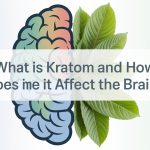Opioids are chemical substances that are either directly extracted from the opium poppy or artificially manufactured in laboratories and are effective in managing pain. Though they are widely used in acute and chronic pain management, their effect on the nervous system can cause serious complications such as opioid drug addiction and even overdose. Understanding how opioids affect nervous system function and its implications and role in the crisis is imperative in dealing with opioid addiction and specific choices people make regarding its use.
What are Opioids?
Opioids include a wide range of substances that come in natural forms such as morphine and codeine and artificial opioids including fentanyl and methadone. Oxycodone and hydrocodone referred to as semi-synthetic opioids are drugs derived from natural opiates but with their chemical structures modified. These drugs are used more for painful situations but are, and have to be prescribed with caution due to their ability to become addictive.
The Nervous System
The nervous system is divided into two main parts that are: The CNS which includes the brain and the spinal cord and the PNS which is a network of nerves in the whole body. The central nervous system is responsible for receiving and making sense of what we experience through our senses while the peripheral nervous system bears the task of communicating with the central nervous system for the rest part of the body. Neurons, the most basic components of the nervous system, transmit signals both electrically and chemically using neurotransmitters whose main function is to translate messages across synaptic junctions.
How Opioids Work in the Brain
Mechanism of Action
Opioids work through proteins referred to as opioid receptors situated on the outside membranes of neurons inherent in the brain, spinal cord, and some other organs. There are three main types of opioid receptors: , mu (μ), delta (δ), and kappa (κ). The mu receptors are responsible for the analgesic (pain-relieving) and euphoric effects of opioids, as well as their addictive potential.
Opioids and Dopamine Release
Mu receptors act in the same way when opioids bind to them: they block the release of GABA, a transmitter that generally halts the release of dopamine. Through the suppression of GABA, opioids allow for an up-regulation of dopamine in the rewarding circuits of the brain most specifically the nucleus accumbens. These stimuli cause a release of dopamine, which induces the experience of pleasure and euphoria thus encouraging more drug-taking behavior and therefore the formation of an opioid addiction.
Effects on Pain Perception
Opioids are very useful as pain relievers because they inhibit the authors of the pain signal in the spinal cord and they also modify the perception of pain within the brain. Opioids that are administered on the spinal cord have varying effects on the release of neurotransmitters that play a role in the transmission of pain which are the substance P and glutamate. About the brain, opioids, bring comfort to areas of the brain that are associated with pain and emotion even when the cause of pain remains intact.
Short-Term Effects on the Nervous System
Pain Relief
The foremost clinical use of opioids is in the management of chronic pain. Some of the most common ones include drugs that are used to manage moderate to severe pain of short-term nature such as post-operative pain or pain resulting from injuries. The opioids’ effectiveness in pain relief management stems from the potent impact they have on the opioid receptors in the CNS that reduce the perception of pain and thus enhance the lives of many patients.
Euphoria
Probably the most well-known of these effects is the feeling of euphoria they can produce. This euphoria results from the increased release of dopamine that can be derived from opioids. Despite this effect may help in giving temporary relief from pain and discomfort, it plays a major role in the abuse and addiction to opioids.
Side Effects
This is because opioids can produce various side effects in the short term. It has been associated with side effects such as drowsiness, constipation, nausea, and respiratory depression. The most life-threatening effect is respiratory depression which is a serious slowing down of breathing and can lead to death, especially if opioids are in large doses or mixed with other depressants such as alcohol or benzodiazepines.
The Physical Effects of Opioids
The short-term impacts of opioids are not limited to the management of pain or the production of feelings of euphoria. Some of its effects include constriction of the pupils, mouth dryness, and reduced bowel movements due to its impact on gastrointestinal tract motility. Moreover, opioids cause hypotensive and bradycardic effects, which may pose risks for patients with underlying cardiovascular disorders.
Long-Term Effects on the Nervous System

Tolerance
This is typically because when the individuals continue to use the opioids, they develop a tolerance to them, and thus, need a larger amount to bring about the same impact. Tolerance happens because the body especially the nervous system gets used to the presence of the drug and requires more opioids to feel the same effect.
Dependence
Physical dependence on the drug develops as the patient gets to a stage of needing the drug for survival and will experience withdrawal symptoms if the drug is not given. Some of the effects that are considered withdrawal symptoms are muscle cramps, restlessness, stomach upsets, nausea, and vomiting, and intense desire for the substance. Psychological dependency, evidenced by the compulsions of the body to take the substance even with adverse effects, also contributes to this problem in opioid use.
Neuroplasticity
Prolonged use of opioids results in changes in the brain’s form and workings called neuroplasticity. Opioid addiction affects the brain’s reward pathways, and therefore if an individual is continuously exposed to opioids, it becomes hard for him or her to get high from natural stimuli such as food or social relationships. These alterations often remain even after the cessation of drug use and that increases the relapse rates in the patients suffering from opioid addiction.
Withdrawal Symptoms
When a person is physically opioid dependent and decides to abstain from opioid use, she or he will go through withdrawal, as its name suggests, because the body tries to reestablish balance. It is usually described to be as uncomfortable as having the flu and that is how withdrawal is experienced. Its symptom consists of a rash that begins within the first hours after the last dose and can persist for the next several days. The primary symptoms are usually restlessness, irritability, tremors, perspiration, vomiting, and specific hunger.
Worrying Effects of Opioids for the Long-Term
However, the effect of opioids does not stop at the nervous system, it has long-term effects on the body. Some of the complications of long-term opioid use include alteration in hormonal levels, a weakened immune system, and vulnerability to diseases. Furthermore, the issue of toxicity stays unsolved due to the likelihood of overdose, especially when a degree of tolerance is reached and the consumer needs more products to get high.
Opioid Use Disorder and the Brain
The Path to Addiction
OUD refers to a substance use disorder that occurs when opioids cause clinically significant impairment or distress. People who are addicted to opioids start by using opioids recreationally or even using prescribed opioids inappropriately. With continued consumption of opioids, the brain undergoes remarkable changes that facilitate the usage of the substance, hence the difficulty of abstaining from it.
Brain Changes
Opioid use results in numerous alterations in brain structure and functionality where duration matters most. Such changes include Altered dopamine receptors, decreased grey matter density, and cognitive dysfunctions of the prefrontal cortex, the area associated with decision-making and impulse control. These neurobiological alterations explain the compulsive drug consumption and poor decision-making associated with addiction.
Changes in the Brain’s Reward System
Opioids interfere with the brain reward system that plays the role of incentive motivation to promote behaviors such as eating and social bonding. Opioids act on this natural system to artificially trigger an association between drug use and enjoyment, thus resulting in a cycle of addiction. As time goes on, the brain’s natural reward pathways become less responsive, making it difficult for individuals to feel pleasure from everyday activities.
Opioid Addiction Treatment at Orlando Treatment Solutions
Orlando Treatment Solutions is accredited to provide an opioid addiction treatment program that is customized to meet the individual needs of a patient. Our program includes medically supervised detox, medication-assisted treatment, and a variety of therapeutic approaches to support recovery.

If you are a family member or a close friend of someone using opioids or battling opioid addiction, then Orlando Treatment Solutions is here for you. We will provide you with a personalised approach to recovery, alongside a compassionate and encouraging atmosphere to help you turn a new page and live a sober life. Call us at (321) 415-3213 to learn more.



























